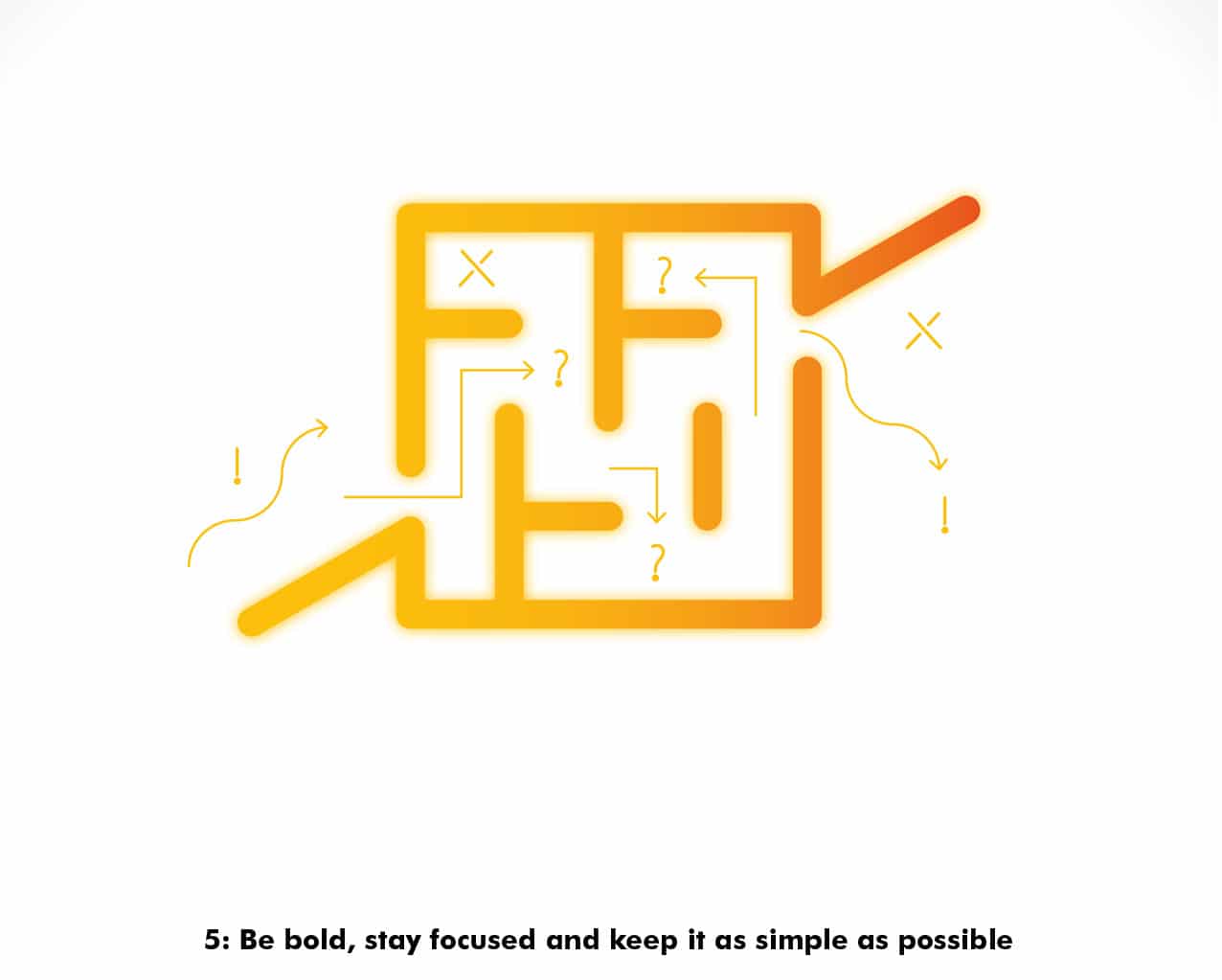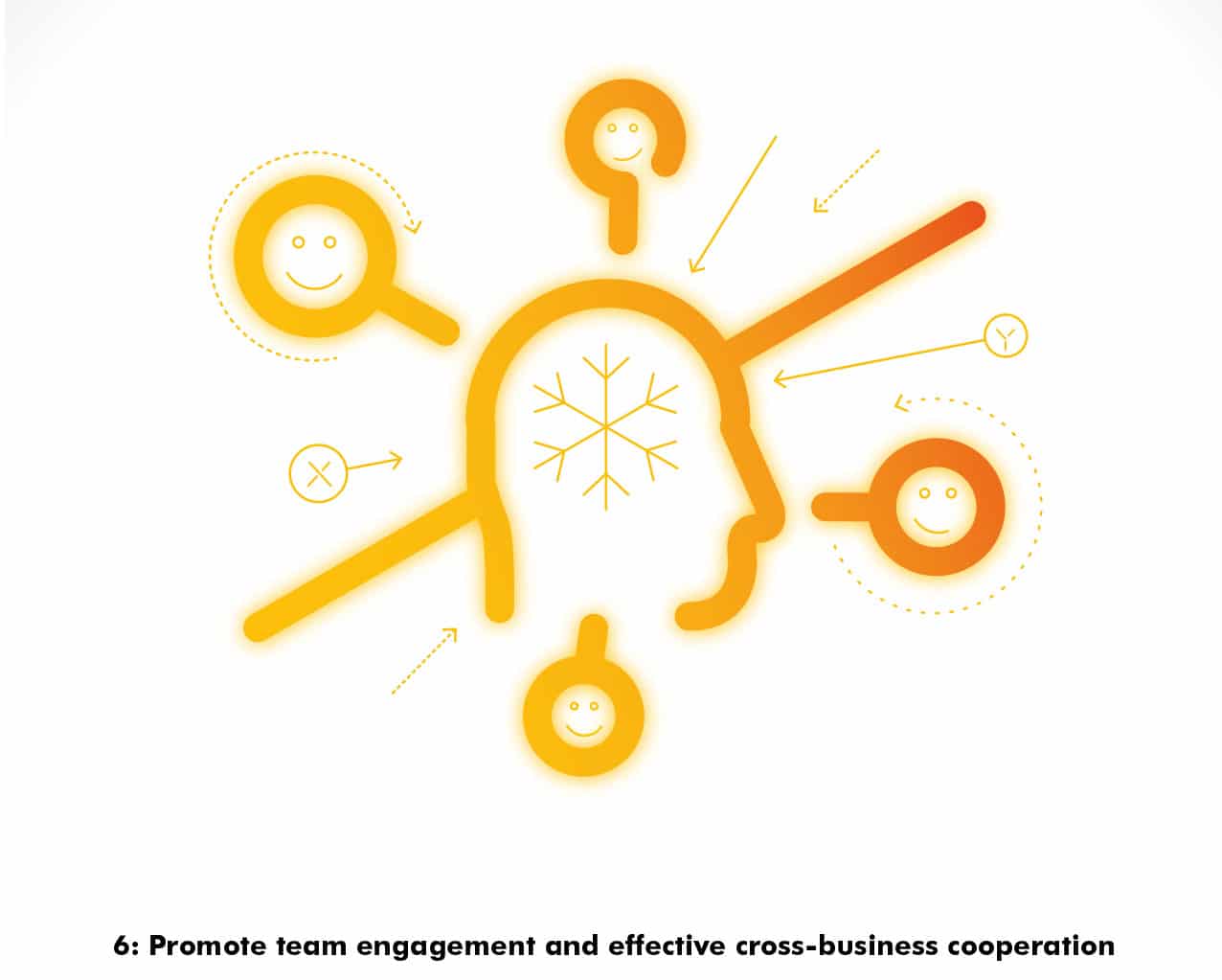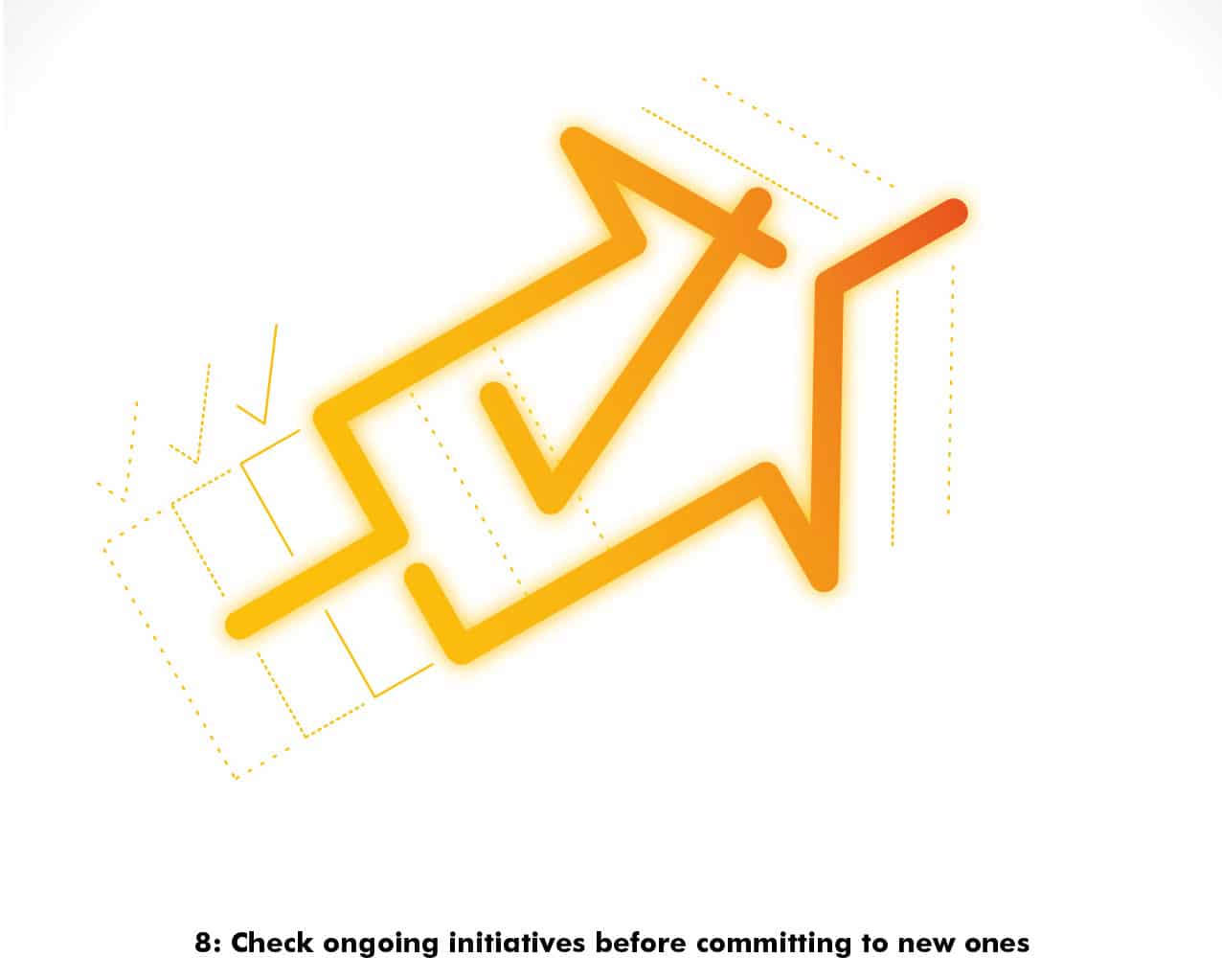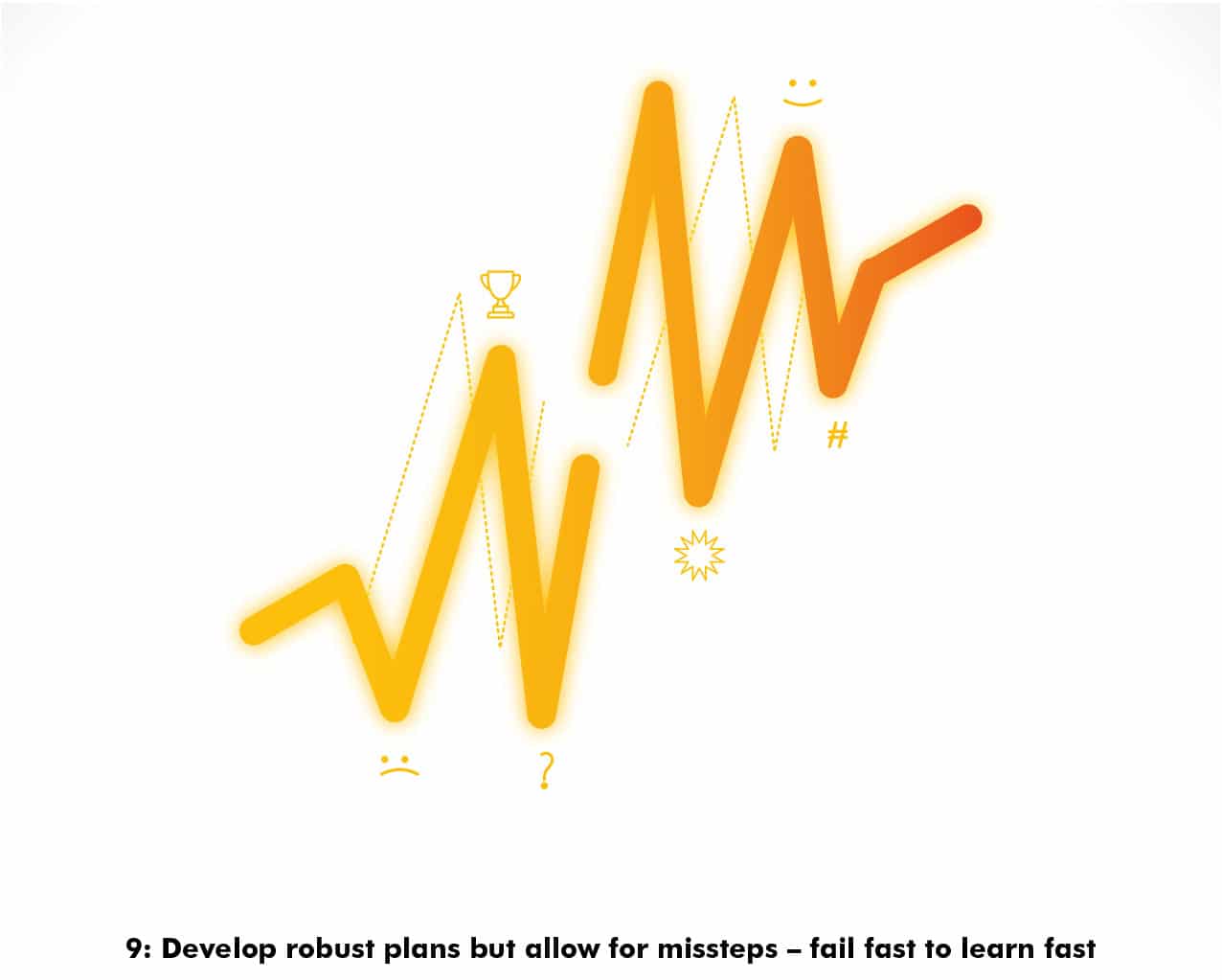

Every CEO or leader is accountable for overseeing strategy design and delivery in his or her organization. Leaders also recognize that strategy implementation excellence is central to the organization’s sustainable growth and prosperity. Yet most strategic initiatives fail because of flawed implementation, at great cost in time and resources. Consider these data points:
Global competition and a networked society are driving almost daily changes in the competitive landscape. In this highly kinetic environment, sustainable growth will depend on delivering the right strategies the right way. Yet the average organization fails to meet at least 20 per cent of its strategic goals as the result of implementation issues and challenges, according to the 2017 EIU survey. An earlier EIU study, published in 2013, showed that just a little over half of the strategic initiatives (56 per cent) have been successful.
The dynamic interplay between strategy design and delivery starts at the moment the organization defines its strategic goals and investments. Most organization leaders appear to understand the importance of implementation and acknowledge they need to upgrade their delivery capabilities. At least 59 per cent of respondents to the most recent EIU survey acknowledge a gap between their strategy design and implementation and recognize its negative impact on organizational effectiveness. That’s barely an improvement over the 2013 EIU survey, when 61 per cent of respondents admitted to performance- sapping shortfalls in implementation.
There is, however, no single true path to implementation excellence. Because there are several frameworks for strategy design and implementation, every organization needs to craft its own recipe for strategic success. We believe this recipe will be more effective when it adheres to a set of core principles.
At the Brightline Initiative, a coalition of leading global organizations, we have crafted a set of guiding principles to help leaders close the expensive and unproductive gap between strategy design and delivery.
We use the word “principles” for a reason. The Cambridge Dictionary says that a principle can be either a “moral rule” that defines “good behaviour or fair dealing” or a “basic truth” that “explains or controls how something happens or works.” We view these principles as both a moral rule and a basic truth.
Practices can change, business models are disrupted, technology evolves, but principles do not change. They are the soul of strategy design and delivery. No matter the conditions of the organization’s environment, no matter how complex and challenging its strategic goals, its principles are permanent. They safely guide leaders and teams toward the right decisions, practices, and processes. They enable organizations to counter the threats to the implementation of strategic initiatives and the realization of strategic goals. And they point the way toward more effective behaviours and attitudes and guide the use of appropriate practices, tools, and techniques aligned with the business’s needs and challenges.
The process of identifying and crafting the 10 principles started in May 2017, when a group of experts, practitioners, and researchers, supported by the Brightline team, met to discuss the most complex challenges that organizations face regarding strategy design and delivery. Some of those challenges are well known, such as the absence of alignment between senior and middle managers on one hand and those responsible for executing the strategy on the other.
Other problems still require further exploration and understanding. How, for example, can people be highly motivated to deliver certain strategic initiatives? And how can organizations deal with failure when they need to deliver results quickly and effectively at all times, with little room for mistakes?
Even without full answers to those and other questions, we were able after that first meeting to initiate a process that melded a scientific approach with the experience and knowledge of leading organizations and experts in the strategy discipline. Intensive discussions and group work produced some very rich content. We then analyzed the results using text mining techniques and cluster analysis to identify key areas for further exploration and refinement. We analyzed the most recent scientific studies and empirical surveys of strategy design and implementation with the aim of corroborating and complementing the ideas and concepts identified in this process.
The outcome of this process was a preliminary set of concepts that evolved into the first version of the principles. We then took the draft principles through several iterations to refine the concepts that underlie the ten Brightline Principles. Our aim was to develop simple, clear, robust, and practical guidance to help leaders succeed at bridging the gap between strategy design and delivery. The members of the Brightline coalition believe that every leader can rely on these ten principles to help them close the gap between strategy design and delivery.

Strategy delivery doesn’t just happen automatically once it is designed! The importance of active and visible leadership cannot be overstated. You invest substantial resources, creative time, and energy in designing the right strategy. You need to give equal priority and attention to delivering it – before you move on to something else. It’s an essential part of your role to ensure that your organization has the programme delivery capability it needs to implement your strategy.

Do not underestimate entropy! The orchestration required to succeed in today’s fast-changing and complex business environment is enormous. Once you have defined and clearly communicated the strategy, your responsibility shifts to overseeing the progress of implementation so that the strategy delivers results and achieves its goals. You need to know where in your organization change happens and who manages the programmes that drive that change. You are accountable for proactively addressing emerging gaps and challenges that may impact delivery. Without this discipline, rigor, and care, your strategy has little chance of success.

Inspire and assign the right people to get the job done! Actively balance “running the business” and “changing the business” by selecting and securing the right resources for each – they often have different needs. Recognize that team leadership skills are at a premium, and assign the best leaders with sufficient capacity to tackle head-on the most challenging programmes and those essential for successful strategy implementation.

Don’t forget to look outside! Continue to monitor customer needs, collect competitor insight, and monitor the market landscape for major risks, unknowns, and dependencies. Advantage in the market flows to those who excel at gaining new insights from an ever-changing business environment and quickly responding with the right decisions and adjustments to both strategy design and delivery.

Encourage smart simplicity! Initiating or rapidly reacting to dramatic changes in the business environment is an increasingly important capability for success. Many of the delivery challenges you will face will be complex and interdependent. In the face of this, the best way to remain nimble is to surround yourself with simplifiers rather than complicators. You need people who can get to the core of an opportunity or threat, understand the drivers, deliver the information, and take the action you need in the way you need it. That way, you minimize bureaucracy, explore ideas, take appropriate risks, prioritize work, ensure accountability, and focus on delivering value through your strategic initiatives.

Beware of the “frozen middle”! Gain genuine buy-in from middle and line managers by engaging and activating them as strategy champions rather than just as managers and supervisors. Don’t just assume your people will “get it” – leadership must firmly establish a shared commitment to strategy-delivery priorities and regularly reinforce it. This isn’t the time or place for subtlety. Govern through transparency to engender trust and enhance cross-business cooperation in delivery.

Follow your decisions through to delivery! Commit to making strategic decisions rapidly. Move quickly to correct course, reprioritize, and remove roadblocks. Accept that you likely won’t have all the information you want, and rely on those you can trust to deliver sufficient reliable input to allow thoughtful decisions. Consider and address risks and interdependencies explicitly—both upfront and regularly throughout delivery. Build a lean and powerful governance structure to reinforce accountability, ownership, and a bias towards action, based on agreed metrics and milestones.

Resist the temptation to declare victory too soon! With the right governance, leadership, rigor, and reporting capabilities in place, you can regularly evaluate your portfolio of strategic initiatives. Add new initiatives in response to new opportunities, but first be sure you understand both the existing portfolio and your organization’s capacity to deliver change. Actively address any issues you discover. In the long term, strategic initiative management discipline – critical for effective orchestration of a dynamic initiative portfolio – will work only if robust assessment, support, and course correction are in place.

Proper planning and preparation prevent poor performance! The old axiom is as true as it ever was, but in today’s business environment, strategy planning cycles must be more rapid, dynamic, and agile than in the past. Empower programme delivery teams to experiment and learn in an environment where it is safe to fail fast. Discuss challenges openly, and adjust the plan as needed for success. Learn to reward failure, or at least accept it as valuable input.

Inspiring people is part of your job! Yes, you have to drive accountability and focus on delivery, but you also need to motivate those who do the work. Actively shape a winning culture by engaging and exciting the people responsible for delivering strategic change programmes. Celebrate successes and quick wins. Generously and publicly acknowledge those who demonstrate the leadership behaviours and programme delivery capabilities that make strategy succeed, and ask them to share their experiences.
Organizations rise or fall on their ability to successfully implement winning strategies. At a time when leaders are expected to do nothing less than transform their organizations so that they can survive and prosper in a hyper-connected, fast-changing world, they urgently need to know how to turn ideas into reality. We at the Brightline Initiative are ready, willing, and eager to help leaders and their organizations build their implementation capabilities. We offer these 10 principles as a first step on a long and, we hope, ultimately rewarding journey toward implementation excellence.
Ricardo Viana Vargas is Executive Director of the Brightline Initiative.
Edivandro Conforto is Strategy Research Advisor for the Brightline Initiative.
This is an excerpt from Strategy@Work, a Brightline and Thinkers50 collaboration bringing together the very best thinking and insights in the field of strategy and beyond.

Thinkers50 Limited
The Studio
Highfield Lane
Wargrave RG10 8PZ
United Kingdom

Thinkers50 Limited
The Studio
Highfield Lane
Wargrave RG10 8PZ
United Kingdom

Thinkers50 Limited
The Studio
Highfield Lane
Wargrave RG10 8PZ
United Kingdom
| Cookie | Duration | Description |
|---|---|---|
| LANG | 9 hours | Linkedin set this cookie to set user's preferred language. |
| nsid | session | This cookie is set by the provider PayPal to enable the PayPal payment service in the website. |
| sp_landing | 1 day | The sp_landing is set by Spotify to implement audio content from Spotify on the website and also registers information on user interaction related to the audio content. |
| sp_t | 1 year | The sp_t cookie is set by Spotify to implement audio content from Spotify on the website and also registers information on user interaction related to the audio content. |
| tsrce | 3 days | PayPal sets this cookie to enable the PayPal payment service in the website. |
| x-pp-s | session | PayPal sets this cookie to process payments on the site. |
| __cf_bm | 30 minutes | This cookie, set by Cloudflare, is used to support Cloudflare Bot Management. |
| Cookie | Duration | Description |
|---|---|---|
| l7_az | 30 minutes | This cookie is necessary for the PayPal login-function on the website. |
| Cookie | Duration | Description |
|---|---|---|
| CONSENT | 2 years | YouTube sets this cookie via embedded youtube-videos and registers anonymous statistical data. |
| _ga | 2 years | The _ga cookie, installed by Google Analytics, calculates visitor, session and campaign data and also keeps track of site usage for the site's analytics report. The cookie stores information anonymously and assigns a randomly generated number to recognize unique visitors. |
| _gat_gtag_UA_10408481_1 | 1 minute | Set by Google to distinguish users. |
| _ga_ZP8HQ8RZXS | 2 years | This cookie is installed by Google Analytics. |
| _gid | 1 day | Installed by Google Analytics, _gid cookie stores information on how visitors use a website, while also creating an analytics report of the website's performance. Some of the data that are collected include the number of visitors, their source, and the pages they visit anonymously. |
| Cookie | Duration | Description |
|---|---|---|
| NID | 6 months | NID cookie, set by Google, is used for advertising purposes; to limit the number of times the user sees an ad, to mute unwanted ads, and to measure the effectiveness of ads. |
| test_cookie | 15 minutes | The test_cookie is set by doubleclick.net and is used to determine if the user's browser supports cookies. |
| VISITOR_INFO1_LIVE | 5 months 27 days | A cookie set by YouTube to measure bandwidth that determines whether the user gets the new or old player interface. |
| YSC | session | YSC cookie is set by Youtube and is used to track the views of embedded videos on Youtube pages. |
| yt-remote-connected-devices | never | YouTube sets this cookie to store the video preferences of the user using embedded YouTube video. |
| yt-remote-device-id | never | YouTube sets this cookie to store the video preferences of the user using embedded YouTube video. |
| yt.innertube::nextId | never | This cookie, set by YouTube, registers a unique ID to store data on what videos from YouTube the user has seen. |
| yt.innertube::requests | never | This cookie, set by YouTube, registers a unique ID to store data on what videos from YouTube the user has seen. |
| Cookie | Duration | Description |
|---|---|---|
| DEVICE_INFO | 5 months 27 days | No description |
| loglevel | never | No description available. |
| m | 2 years | No description available. |
Thinkers50 Limited has updated its Privacy Policy on 28 March 2024 with several amendments and additions to the previous version, to fully incorporate to the text information required by current applicable date protection regulation. Processing of the personal data of Thinkers50’s customers, potential customers and other stakeholders has not been changed essentially, but the texts have been clarified and amended to give more detailed information of the processing activities.